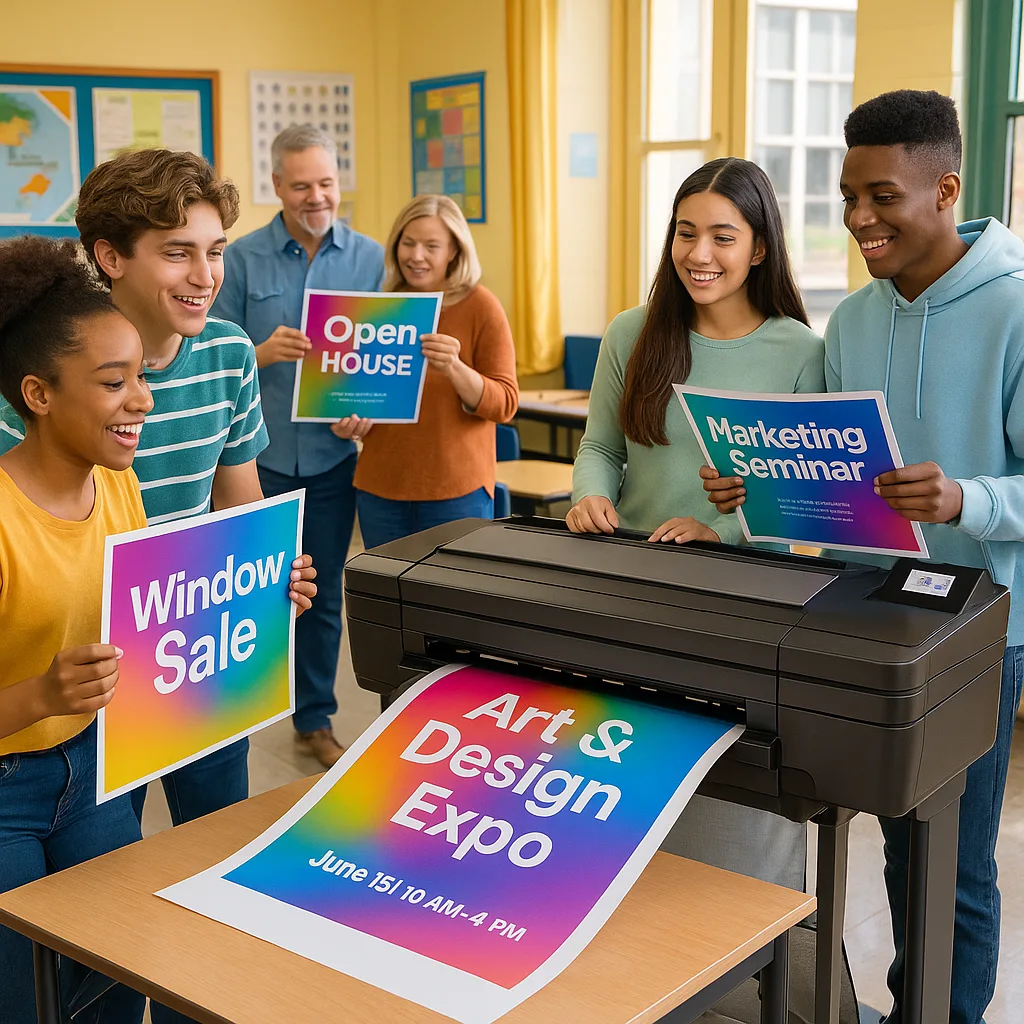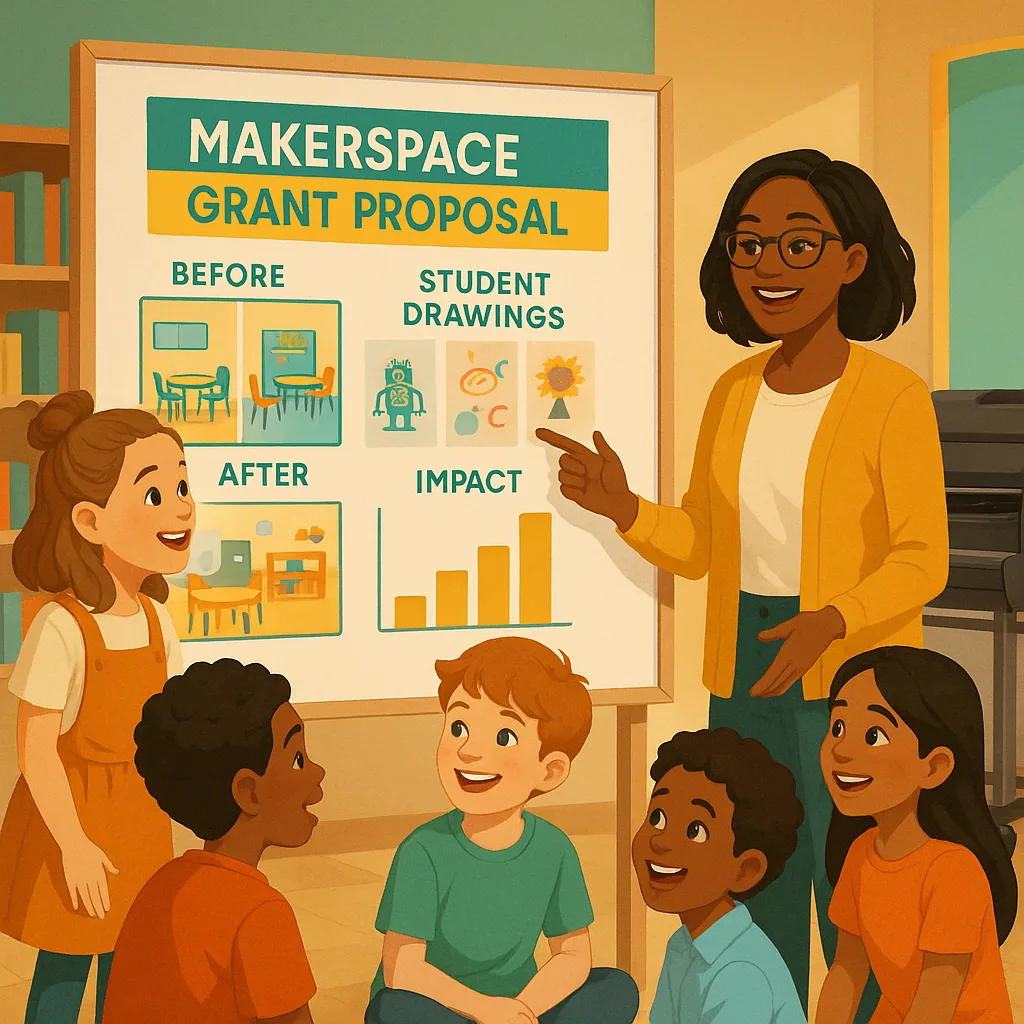
History teachers face a unique challenge in today’s digital age. While students scroll through endless streams of content on their devices, traditional bulletin board displays often fail to capture their attention. Yet, when you combine the power of a poster maker for schools timeline displays with interactive QR technology, something remarkable happens—suddenly, those same students are eagerly exploring primary sources, diving into historical narratives, and even contributing their own research to classroom exhibits.
Transform Your Classroom Into an Interactive History Museum
The traditional classroom timeline—a linear display of dates and events—has served education well for decades. However, today’s students crave deeper engagement. By leveraging modern printing technology and digital tools, educators can create museum-quality exhibits that rival professional installations. These displays don’t just decorate walls; they become active learning spaces where students investigate, analyze, and contribute to historical understanding.
Research from the American Historical Association indicates that interactive historical displays increase student retention by up to 40% compared to traditional lecture methods. When students can physically interact with timeline elements while accessing digital resources, they develop stronger connections to historical content and demonstrate improved critical thinking skills.
The Power of QR-Linked Learning
QR codes bridge the gap between physical displays and digital resources seamlessly. Students can scan codes with their devices to access primary source documents, watch historical footage, listen to period music, or explore 3D models of artifacts. This immediate access transforms passive viewing into active investigation.
Consider a Civil War timeline where each battle includes a QR code. Students scanning the Gettysburg code might access Lincoln’s handwritten address, battlefield maps, soldier letters, and even virtual tours of the modern memorial. This multi-sensory approach accommodates various learning styles while maintaining academic rigor.

Students engage with QR-linked timeline content
Essential Components for Poster Maker for Schools Timeline Displays
Visual Impact
Large-format posters create museum-quality displays that command attention and respect
Digital Integration
QR codes seamlessly connect physical displays to unlimited digital resources
Student Ownership
Interactive displays encourage student research and contribution to exhibits
Meeting State Standards Through Visual Timeline Creation
Creating QR-linked timeline displays naturally addresses multiple state standards across grade levels. Students develop chronological thinking, analyze cause and effect relationships, evaluate primary sources, and synthesize information from multiple perspectives. The process of designing these displays requires research skills, critical analysis, and creative presentation—all essential components of modern history education.
For instance, when using a poster maker for schools to create timeline segments, students must determine which events deserve prominence, select appropriate visual representations, and write concise yet informative captions. They learn to balance aesthetic appeal with academic accuracy while considering their audience’s needs.
The integration of QR codes adds another layer of standards alignment. Students practice digital literacy by creating and managing online content repositories. They develop media evaluation skills by selecting appropriate resources for linking. Most importantly, they learn to present historical narratives through multiple formats, preparing them for college-level research and modern workplace communication.
Step-by-Step Implementation Guide
1. Content Selection and Organization
Start by collaborating with students to identify key events, figures, and themes. Create a master list that balances breadth with depth. For a Revolutionary War timeline, you might include major battles, political milestones, social movements, and international influences. Each element should connect to specific learning standards while offering opportunities for deeper exploration through QR links.
2. Design and Layout Planning
Sketch your timeline’s physical layout, considering available wall space and viewing angles. Horizontal timelines work well for chronological progression, while vertical displays can emphasize cause-and-effect relationships. Plan for 24″ to 36″ poster segments that create visual impact while remaining manageable for student handling.
3. Creating QR Code Libraries
Develop a digital repository using Google Drive, Microsoft OneDrive, or a dedicated educational platform. Organize resources by timeline segment, ensuring each QR code links to a curated collection rather than single items. Include primary sources, scholarly articles, multimedia content, and student-created materials. Test all links thoroughly before printing.
4. Production Using Your Banner Printing Machine
Leverage your school’s banner printing machine to produce professional-quality timeline segments. Select heavyweight paper or vinyl for durability, especially in high-traffic areas. Consider lamination for frequently touched sections. The coated poster paper option provides excellent color reproduction while resisting fingerprints and minor spills.
5. Installation and Interactive Elements
Mount timeline segments at appropriate heights for your student population. Add physical interactive elements like flip cards, rotating wheels, or removable pieces that complement digital content. Create “investigation stations” where students can use tablets or smartphones to explore QR-linked resources in depth.
Maximizing Student Engagement Through Digital Integration
The magic happens when students become content creators rather than passive consumers. Assign small groups to research specific timeline segments, encouraging them to find unique primary sources and create original interpretations. One group might develop a podcast series about Revolutionary War spies, while another creates infographics comparing colonial and British perspectives on key events.
Using tools like Canva, students can design visually appealing poster segments that maintain consistency while showcasing individual creativity. The lifetime design service available with Poster Studio Express systems provides professional support when students need help translating their ideas into polished designs.
Encourage students to think beyond traditional historical narratives. QR codes can link to student-produced documentaries, interactive maps, virtual museum tours, or even augmented reality experiences. This multimedia approach validates different learning styles while developing 21st-century skills essential for college and career readiness.
Transform Your History Classroom Today
Ready to create museum-quality interactive timeline displays? The Education Express 36″ Package A provides everything needed to produce professional timeline segments, from the printer itself to design software and ongoing support.
Or call our education specialists at 866-788-7900 to discuss your timeline project needs
Assessment and Academic Rigor
Interactive timeline displays offer unique assessment opportunities beyond traditional tests. Students demonstrate understanding through their curation choices, design decisions, and digital content creation. Develop rubrics that evaluate historical accuracy, source credibility, visual communication, and digital literacy skills.
Consider implementing peer review processes where students evaluate each other’s timeline segments. This collaborative assessment builds critical thinking skills while fostering respectful academic discourse. Students learn to provide constructive feedback and defend their historical interpretations with evidence.
Track engagement metrics through QR code analytics to understand which resources students find most valuable. This data informs future instructional decisions and helps identify areas where additional support might be needed. Regular reflection sessions allow students to articulate their learning journey and connect timeline exploration to broader historical themes.
Creating QR-linked timeline displays transforms history education from passive memorization to active investigation. When combined with quality printing technology, these interactive exhibits rival professional museum installations while maintaining curriculum alignment and academic rigor. Students develop essential skills in research, design, digital literacy, and historical thinking—all while engaging deeply with content that might otherwise feel distant or irrelevant.
The investment in a proper poster maker for schools timeline displays pays dividends through increased student engagement, improved learning outcomes, and the creation of lasting educational resources. These displays become focal points for learning, inspiring curiosity and encouraging students to see themselves as historians capable of interpreting and presenting the past in meaningful ways.





